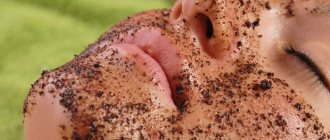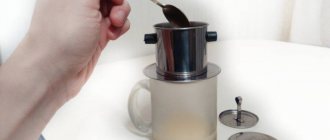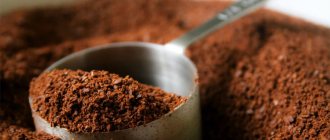Coffee invigorates not only people, but also plants! If you are an avid coffee drinker, do not rush to throw away the spent grounds. Make it “work” for your harvest with the help of our tips.
Many of us cannot imagine our morning without a cup of aromatic strong coffee. This black drink has a truly “magical” effect on the body: thoughts become clearer, performance and mood improve. Did you know that coffee can affect plants in much the same way? Of course, with proper use!
Coffee as fertilizer
Naturally, the effectiveness of coffee cannot be compared with any fast-acting fertilizer, and certainly not a substitute for complex fertilizing. But it is worth recognizing that adding coffee grounds to the soil around plants has a beneficial effect on them.
Decaying organic matter increases the biological activity of the soil. Firstly, it saturates the soil with nitrogen. Secondly, it attracts earthworms, which loosen the soil. Third, coffee used as a fertilizer allows plants to more easily absorb copper, magnesium, potassium and phosphorus from the soil.
Even though coffee contains 2% nitrogen, this does not mean that it can replace a complete nitrogen fertilizer. Since coffee grounds take a long time to decompose, the elements are released slowly.
There is an opinion that coffee significantly increases the acidity of the soil, so it is suitable as a fertilizer only for plants that require a low pH level (conifers, rhododendrons, heathers, etc.). However, this is not quite true. Coffee does “sour”, but only when fresh.
Sleeping coffee grounds have a neutral reaction - about pH 6.5-6.8 (with an ideal acid-base balance of pH 7). To be sure, it is advisable to rinse the grounds with clean water before using them in the garden.
How to use grounds in the garden
It can be mixed with plant seeds (carrots, beets), this will speed up germination. A mixture of soil and dry coffee substrate is placed in planting pots for seedlings; this soil mixture gives excellent results. The seedlings grow strong and can easily be transplanted into holes.
You can also scatter the substance around the rooted seedling, which will facilitate an increase in nitrogenous substances in the fertile soil layer after each watering.
Note! If you set fire to a handful of cake in the house, all the flies and mosquitoes will fly away.
Fertilizer can be buried to a depth of about 4 mm. This method will retain moisture after watering and provide an influx of oxygen into the soil.
When planting, use compost with grounds mixed with the fertile layer in half. This will provide the seedlings with the necessary nutrition.
Also, dry grounds are simply diluted with water and irrigated green spaces.
Improving the mechanical properties of soil
Spent coffee is used as a fertilizer in the country to improve the mechanical characteristics of the soil. The soil texture is improved by the biological elements of the grounds. It is especially useful to use cake on soils of heavy texture - clayey, loamy. On sandstones, coffee cake reduces acidity, which has a beneficial effect on the composition of the fertile layer.
Note! Coffee protects the garden from weeds.
However, if you regularly use cake for mulching, the soil layer can become compacted and begin to impede air permeability. Therefore, mix the substrate with fertilizers of a larger fraction.
How to use grounds to improve soil and control pests
Spent coffee grounds are widely used in the country: in the garden, vegetable garden and greenhouse. Experienced gardeners use it:
1. For mulching plantings.
2. For light acidification of the soil.
3. To improve the mail structure. Adding dried coffee to the soil mixture makes it more airy and lighter. At the same time, it is important not to pile coffee grounds in a thick layer around the plants, otherwise they can cause the appearance of a dense soil crust that prevents free access of air and moisture to the root system of the plants.
4. In addition, coffee grounds can be used to make compost, which can later be used to grow flowers, vegetable seedlings and mushrooms. To prepare it, you need to put the following in a compost pit specially designated for this purpose:
Attention! If desired, you can also add some leaves, pine needles, bone meal, and even cardboard or paper to the mixture.
All components must be mixed well, sprinkled with soil and water on top, and then use a stick to make several holes in the pile. Useful compost will be ready for use in just 4-6 weeks. During this period, you should ensure that the pile is always wet.
5. To get rid of ants and snails. Ants cannot stand the coffee aroma and will disappear from the greenhouse if you sprinkle coffee on their nests. The same applies to snails - they will stop annoying plants if you sprinkle coffee grounds on the soil around them.
6. To wean your cat from digging holes in the garden, you should use a mixture of crushed orange peels and drunk coffee. By scattering the fragrant mixture around the plants, you can be sure that the cat will not make a toilet in the beds.
Coffee grounds compost
Composting used coffee couldn't be easier - just throw the grounds into the compost heap. Again, given the controversy about its acidity, for greater peace of mind it is advisable to pre-rinse it under running water.
Following the grounds, you can also send paper coffee filters. All this will rot and benefit the plants.
The only important nuance that should be taken into account when composting is the proper selection of compost components. In addition to coffee grounds and other food waste, you need to add more “solid” components to the compost pit: straw, wood debris, manure, grass clippings, etc. Coffee grounds should make up no more than 15-20% of the total compost, otherwise it simply will not rot.
- How to make the right compost for feeding plants
Fertilizing the soil is an important part of plant growing activities. And compost is considered one of the leaders in the “world of fertilizing”.
What are the benefits of coffee grounds?
Coffee is more than just a dose of caffeine packed into a small cup. Most people, after drinking espresso or cappuccino, get rid of the grounds by throwing them in the trash. According to statistics, each person drinks 300-500 cups of coffee per year.
Assuming that we put a heaping teaspoon of coffee or 10 g into 1 cup, everyone throws out 3-5 kg of grounds annually. Before you throw away the grounds next time, you should think about how they can be reused in the garden, vegetable garden, or for plant nutrition.
Coffee grounds mulch
Many gardeners use coffee grounds as an environmentally friendly mulch. It is safe for plants, releases nutrients in the soil, enriches it with nitrogen, attracts earthworms, looks natural and is pleasing to the eye.
However, the main disadvantage of such mulch is that it can begin to mold. To prevent this from happening, we again recommend rinsing the grounds with clean water and drying them before spreading them over the soil surface.
Also, if you drink coffee with sugar and milk, naturally they will remain on the coffee grounds. Sweet mulch can attract ants and other insects. Therefore, it is necessary to wash the mass before drying.
Use for seedlings
Germinating seeds requires light soil. In heavy and dense soil, it is difficult for young seedlings to develop. Coffee residue has excellent breathability, which helps it improve any soil.
To prepare nutritious soil for growing seedlings, first of all you need to sift the soil, clearing it of debris and large lumps. Then add the pulp and mix everything thoroughly. Seeds in such a mixture hatch faster, and seedlings grow hardier and stronger. However, it is worth remembering that light soil soon loses moisture. You will have to pay closer attention to the frequency of watering to prevent drying out.
Pest barrier
There is an opinion that coffee grounds scattered around plants serve as a reliable barrier against slugs and snails, which can be a real scourge of some crops.
In addition, according to some gardeners, coffee can not only repel, but also destroy the larvae of insect pests, including mosquitoes and bedbugs.
Of course, in the fight against insects dangerous to the crop, you shouldn’t rely solely on coffee, but it won’t hurt to bring it to your side as an additional ally.
Improper use of coffee grounds
In order for coffee to be beneficial, it must be used in the correct way.
- You cannot use regular instant coffee. Due to increased acidity, it will only harm the plants.
- It is not recommended to simply pour coffee cake onto the surface of the pot when fertilizing indoor flowers. Soon it will turn into a dense crust and will not let water and air through to the roots of the plant.
- It is better to avoid excess coffee content in the soil. Caffeine blocks the formation of new roots, which will lead to the slow death of the plant.
- If the flowers begin to change color, it is better to stop fertilizing the soil with cake. Just watering with water in which the grounds were infused is enough.
Cake for garden and home flowers
Spent coffee is placed at the bottom of the flowerpot as fertilizer for indoor flowers. It acts as drainage, retaining moisture and protecting the roots of flowers from excess moisture. For irrigation, use a solution: a teaspoon of powder per liter of fresh, settled water.
Coffee waste is also used in dry form. To do this, a substrate is scattered around the flower and watered with settled water. The earth must be loosened, otherwise the coffee powder will create an impenetrable film on the surface of the earthen clod. For flowers that love acidic soil, drink unslept coffee.
How many spoons of grounds should be placed in a flowerpot? It depends on the volume of the container - from one tsp to two tablespoons.
Do not put wet grounds in flower pots, as they encourage mold.
Bulbous flowers respond well to coffee fertilizer, as they extract enough nitrogen from it for rapid development. Daffodils, hyacinths and tulips will bloom much faster if you regularly treat them with grounds.
Rhododendrons often suffer from root weevil attacks. Spraying the bushes with coffee solution will prevent the appearance of unwanted guests.
Note! Many insects do not like the smell of coffee.
Roses, lilies and begonias are very fond of coffee fertilizing. Rose bushes are sprayed with diluted grounds to protect against midges and other insects. This is a universal remedy for the rosary.
How to feed a flower bed with coffee fertilizer? When forming a flowerbed, you need to make a special mixture: mix a glass of dry powder with a bucket of fertile soil and distribute it over the flowerbed. If the flowerbed is large, take the appropriate number of buckets of fertilizer.
Dry powder is also used to feed the bushes; it is poured around the flower and sprinkled with earth. When water enters during irrigation, nutrients penetrate the soil.
Coffee cake as a fertilizer is widely used in gardening and floriculture. Dry powder structures the soil and creates conditions for breathability. Fertilizer is either placed on the surface of the fertile layer under the plant, or made into a solution for irrigation, or incorporated into the soil. It feeds plants well and compost based on grounds, it is mixed with soil or watered under the roots with a solution.
Thanks to fertilizing, seedlings develop much faster, produce lush flowering and high-quality ovaries. After coffee fertilizing, the fruits acquire a bright taste and color. Some gardeners are confident that regular fertilization of plants with grounds completely replaces chemical fertilizers. However, it is not recommended to use raw powder; it is first dried and the lumps are crushed.
In addition to improving the growth of seedlings, coffee is also used to repel pests - beetles and insects, slugs and ants. The use of cake as a mulching material brings positive results. Organic additive in the form of dried coffee is universal for gardening.
Coffee pulp as a fertilizer is a worthy method of using organic waste to feed garden plants. Dry brewed coffee can be added to soil, compost and water for irrigation. It contains no chemical impurities, its beneficial properties improve the structure of the soil, and its aroma repels garden pests. In addition, the beneficial substances of coffee grounds stimulate growth and improve plant nutrition.
Blank
To ensure that you have enough fertilizer by spring, the powder must be collected in late autumn. This is very simple to do: you need to dry portions of the cake on parchment sheets. When the moisture has completely evaporated, you need to pour the dry substrate into a tin/glass container. They need to be stored in a darkened room.
Instant coffee is not suitable for feeding, only ground coffee.
You cannot fertilize with cake after a sweet drink. It is also unacceptable to dry the cake after coffee with milk or other additives. For feeding, only powder from ground grains cooked without any additives is used.
For which plants is coffee fertilizer suitable?
Gardeners who have already experienced the effect of sleeping coffee on their plots can confidently say that the grounds are excellent for feeding tomatoes, sweet peppers, radishes and black beans, carrots, as well as legumes.
This feeding has a positive effect on berry and fruit trees. Coffee grounds are also suitable as fertilizer for indoor plants and flowers on the site. These are roses, begonias, lilies, azaleas, heather and ferns.
Coffee grounds are a good fertilizer for indoor plants.
Making compost
Due to the high percentage of nitrogen, coffee waste is added to the compost. Such a substrate not only saturates the soil with nutrients, but also prevents fungal infections in seedlings.
To make a coffee compost pile, you need to prepare the area. Fence 1 m2 of land and put up borders. The pile should not exceed a meter in height.
dry coffee grounds;
- wilted weeds;
- tree foliage;
- stale straw;
- 400-450 grams of bone meal.
Composition No. 2:
- liter of dried grounds;
- a mug of dry chicken;
- a couple of mugs of ash;
- a bucket of stale hay.
The ingredients are mixed well and sprinkled with earth on top. After this, the pile is irrigated with settled water and covered with film. To ensure good ventilation, the pile is periodically pierced in several places with a wooden stick. Make sure the compost does not dry out. In extreme heat, it is necessary to irrigate the pile as needed and poke it with a stick. After 3-4 weeks, the temperature in the heap will drop, at which time earthworms are added to it.
To save the pile until spring, you need to cover the compost well with tree branches or spruce branches. The pile is covered with leaves and insulated as thoroughly as possible.
To treat plants with compost, it is first diluted with water, and then the beds or bushes are irrigated at the root. You can also irrigate homemade flowers with liquid compost.
Compost for home flowers
To prepare a nutrient substrate for flowerpots, place dry coffee powder, dry tree leaves and crushed straw in a ratio of 50:30:20 in a bucket or other suitable container. The ingredients are mixed and soil is poured on top. The compost must be well established, so its moisture content should be controlled and moistened in time. To provide oxygen, the compost is pierced with a stick. In a month, the mixture will be completely ripe and can be used to feed flower crops.
Cake composition
For people, the coffee drink is not of great value, but for plants it is a concentration of beneficial microelements. Potassium, phosphorus, nitrogen, copper - these important substances strengthen plant health and provide nutrition.
There is as much nitrogen in the cake as in rotted weeds. This is a very high figure, because crops need nitrogen for active vegetation.
Phosphorus, the content of which in coffee is quite sufficient for the development of crops, improves flowering and fruit set. Phosphorus is also indispensable during the formation of roots and improves the taste of fruits.
In addition to the listed elements vital for crops, coffee powder also contains other important minerals and trace elements.
Benefits of the cake:
- enrichment of the fertile layer with microelements;
- protection from certain types of pests;
- improving soil texture inexpensively;
- attracting soil microorganisms and earthworms;
- savings on the purchase of agrochemicals.
Some gardeners believe that with regular use of coffee fertilizer, agrochemicals are not needed at all. However, it is necessary to take into account the structure of the soil and its characteristics, because certain garden crops require a certain acidity of the fertile layer.
Can raw ground coffee powder be used as fertilizer? No, it is the coffee that is needed to feed the plants, otherwise it can harm the plants instead of benefiting them. The dried powder contains no acid, which is harmful to many crops.
As practice shows, not all seedlings like the coffee aroma. Gardeners have noticed that in areas where alfalfa and clover grow, it is better not to add grounds. Geraniums, cacti and succulents do not like coffee fertilizer.











